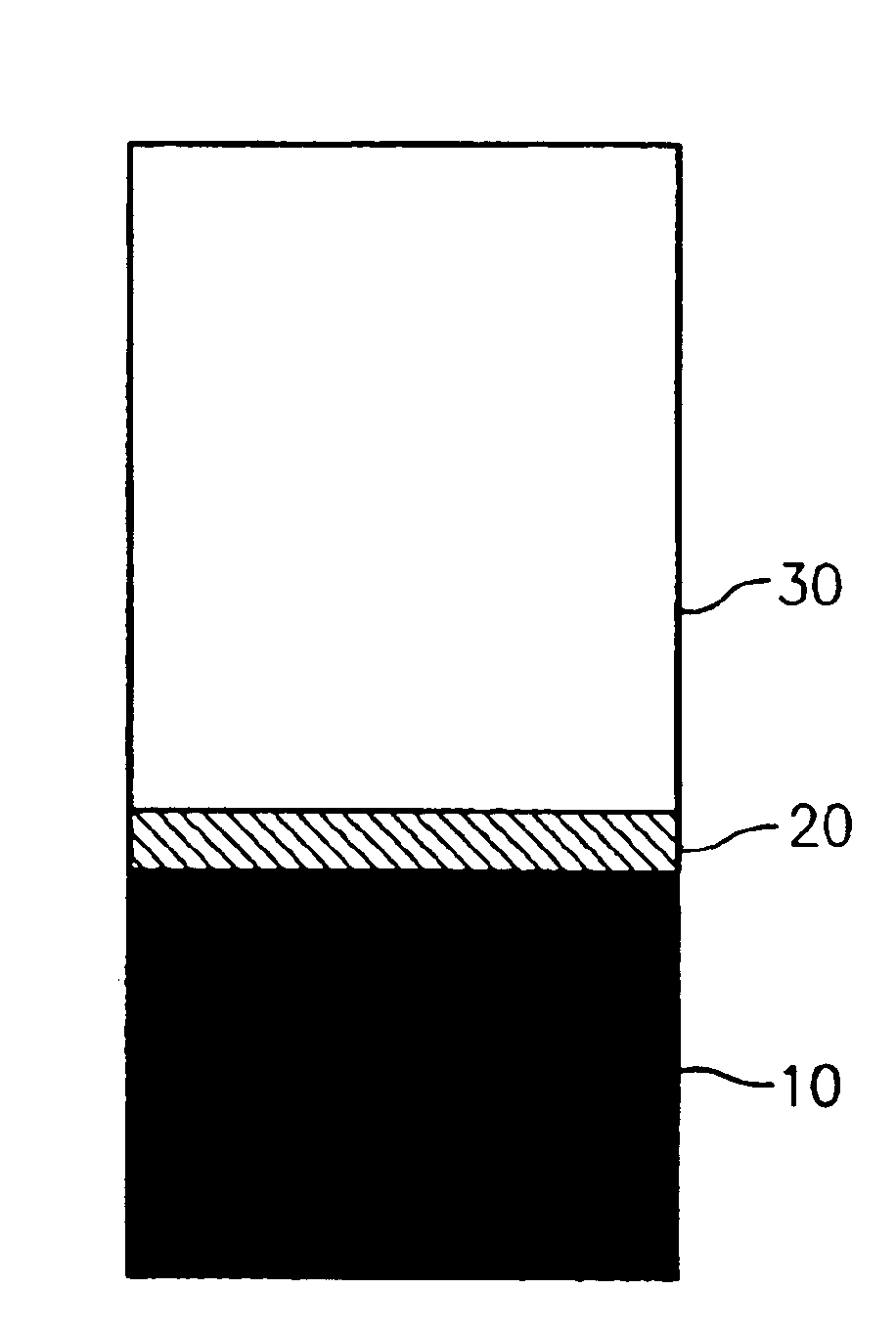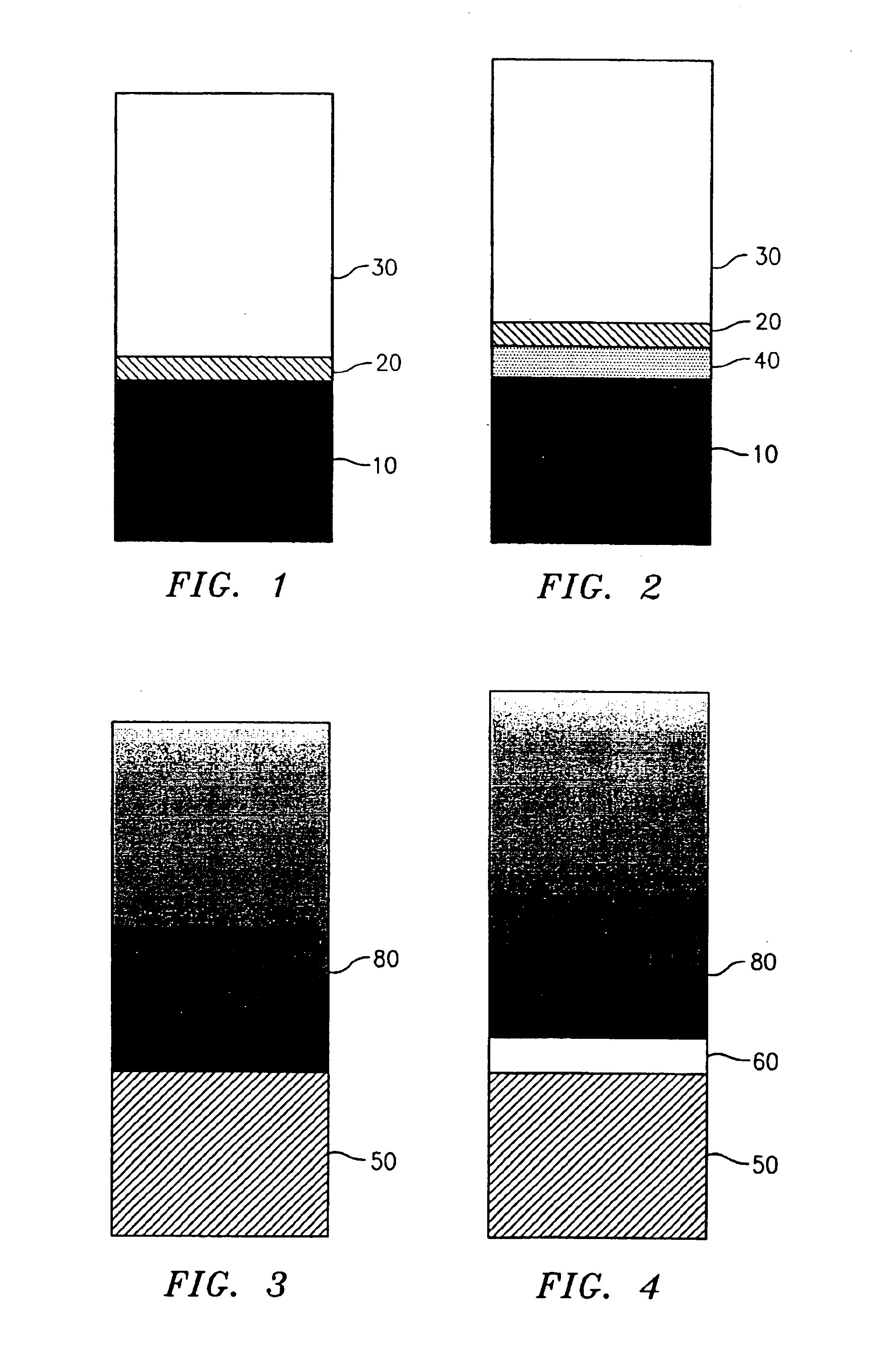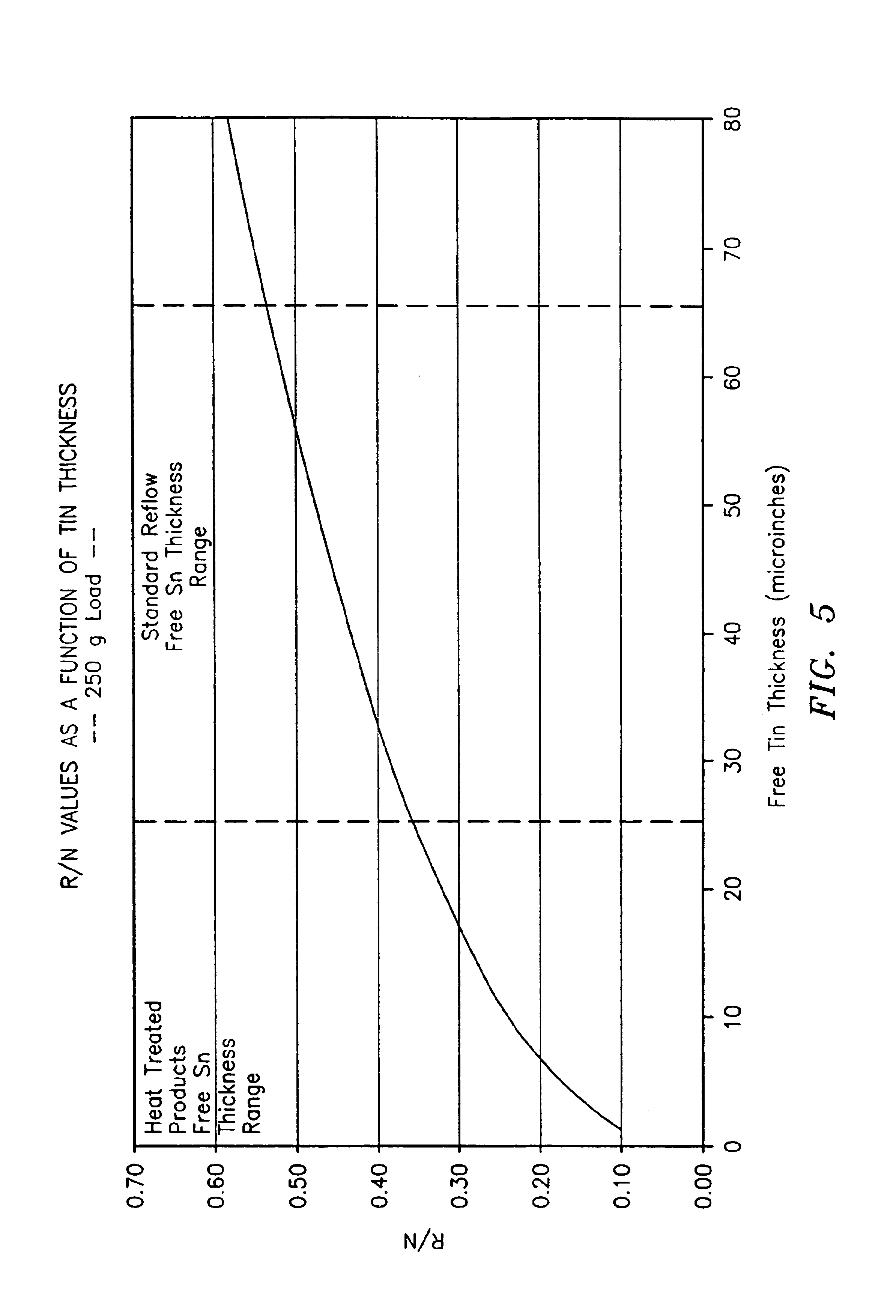Tarnish deterring tin coating
a technology of tin coating and tin coating, which is applied in the field of tin coating, can solve the problems of reducing the performance of electrical devices, reducing the wettability of solder, and affecting the performance of soldering, and achieve the effect of preventing tarnishing of the coating
- Summary
- Abstract
- Description
- Claims
- Application Information
AI Technical Summary
Benefits of technology
Problems solved by technology
Method used
Image
Examples
examples
[0051]The following examples are intended to illustrate, but in no way limit the scope of the present invention. All parts and percentages are by weight and all temperatures are in degrees Celsius unless explicitly stated otherwise.
Deposition of Antitarnish Layers
[0052]The general steps for depositing the coating compositions of the present invention are as follows:
[0053]A selected substrate is first electrocleaned to remove oils and other contaminants from the substrate surface. A sodium hydroxide-based or other alkaline cleaner is used in an anodic cleaning process to clean the substrate surface. The electrocleaning process usually works most efficiently at 20-55° C. with a current density range of 10-50 asf. The substrate is then rinsed clean with DI water. The substrate then undergoes an activation step where the surface is exposed to a sulfuric acid dip. After another DI water rinse, the antitarnish layer is deposited onto the substrate using techniques known in the art as disc...
PUM
| Property | Measurement | Unit |
|---|---|---|
| thickness | aaaaa | aaaaa |
| thickness | aaaaa | aaaaa |
| thickness | aaaaa | aaaaa |
Abstract
Description
Claims
Application Information
 Login to View More
Login to View More - R&D
- Intellectual Property
- Life Sciences
- Materials
- Tech Scout
- Unparalleled Data Quality
- Higher Quality Content
- 60% Fewer Hallucinations
Browse by: Latest US Patents, China's latest patents, Technical Efficacy Thesaurus, Application Domain, Technology Topic, Popular Technical Reports.
© 2025 PatSnap. All rights reserved.Legal|Privacy policy|Modern Slavery Act Transparency Statement|Sitemap|About US| Contact US: help@patsnap.com



